The dynamic and competitive world of retail has proven that staying ahead of the curve is imperative for brands looking to thrive in 2024. Central to this endeavor is the art of personalization, a strategy that has become indispensable for captivating consumers and driving business success. As we dive into the deep waters of retail personalization statistics, we’ll uncover compelling insights that underscore its profound impact on both customer experience and bottom-line results.
Personalization involves analyzing past behavior to develop marketing messages, special offers, and product suggestions that appeal to each customer and improve their chances of making a purchase. From tailored marketing messages to customized product recommendations, these statistics paint a vivid picture of the power of personalization in shaping the retail landscape today. So buckle up as we explore the numbers that reveal why personalization isn’t just a trend—it’s a game-changer for retailers striving to excel in a competitive marketplace.
Retail personalization statistics: Key takeaways for 2024
New developments in technology are shaping the future of personalization and allowing retailers to tailor their experiences further. The most impressive personalization statistics include:
- It can reduce the cost to acquire customers by 50% (McKinsey)
- Only 11% of customers agree that brands always offer a personalized experience (Statista)
- Despite privacy concerns, 80% of customers believe it’s appropriate for brands to collect purchase history to improve personalization. (Statista)
- Most customers (73%) expect personalization to improve with technology. (Salesforce)
- The majority of customers (64%) expect enhanced personalization when they spend more money. (Salesforce)
Personalization in eCommerce vs. brick-and-mortar statistics
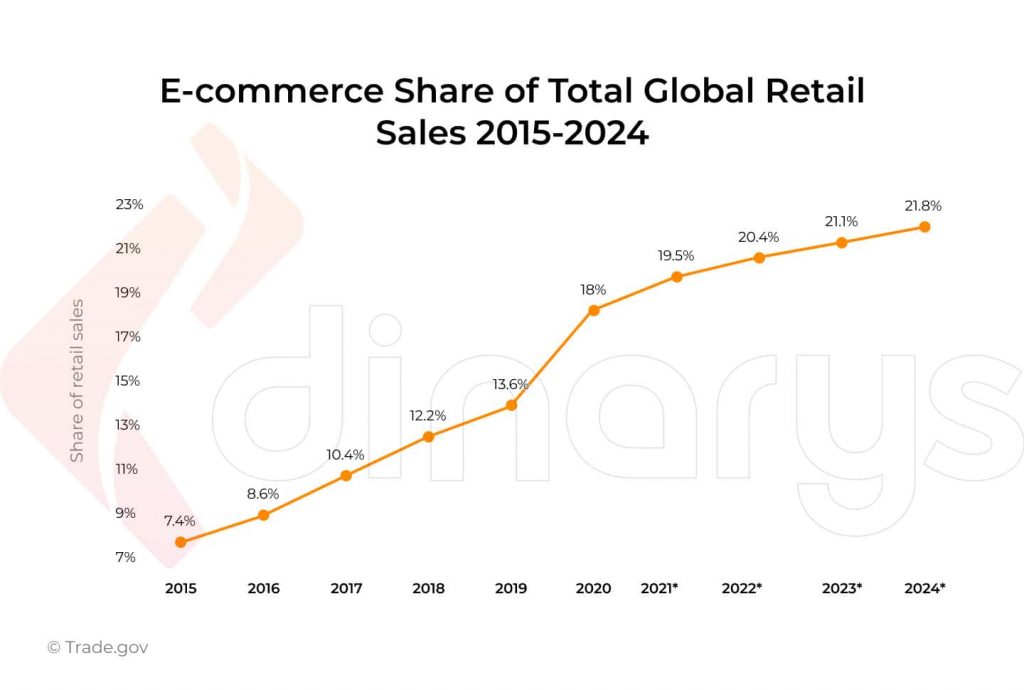
Creating a personalized experience for shoppers impacts retailers online and offline in different ways. Consider these retail personalization stats.
eCommerce companies using advanced personalization see an average return on investment of $20 for every $1 spent. On the other side, brick-and-mortar retailers, such as grocery stores, can see a 1-2 percent increase in total sales.
Because of its nature, eCommerce makes personalization easier. Algorithms can analyze past behavior and automate product recommendations and ads. Brick-and-mortar retailers need multiple channels for personalization. They can use an app or loyalty program to personalize coupons and product recommendations and train in-store associates to recommend products based on a shopper’s questions.
46% of customers want a personalized experience shopping online, and 70% of customers visit brick-and-mortar stores weekly.
An interest in connecting with others has driven customers back to in-person shopping, but they still enjoy a personalized shopping experience online. Businesses that want to capitalize on hybrid personalization benefits can integrate digital product recommendations and information into the in-person experience, allowing a customer to shop online and in-store at the same time.
43% of executives think that combining physical and digital experiences improves personalization.
In 2024, people can shop through social media, virtual reality, voice assistants, smartphones, computers, and in person. Executives believe that creating a cohesive experience across platforms allows them to elevate the customer experience across channels. Understanding their customers allows them to tailor online and offline experiences based on customer preferences.
Personalization statistics on retail customer experience
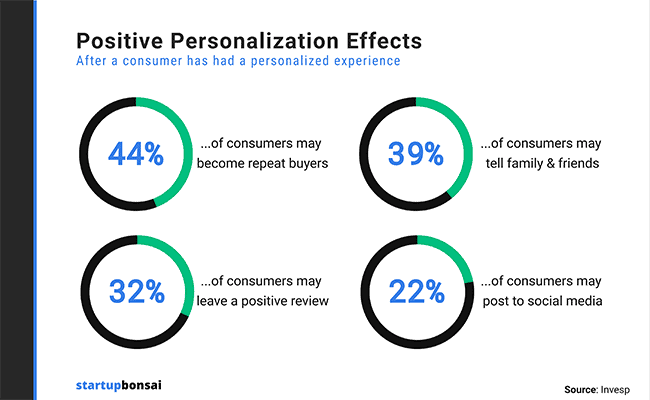
Customer personalization stats show that most shoppers value brands who get to know them whether shopping online or off. Enhanced personalization can greatly improve a customer’s interactions with a brand.
Offering personalized customer experiences can increase a company’s revenue by 40%.
This is one of the most impressive personalization statistics in marketing because it shows how understanding customers increases sales. With customers flocking to brands that cater to their preferences, retailers who ignore personalization in 2024 risk losing business to the competition. More than half of customers expect personalization. Not delivering could dampen their experience enough to leave a company.
Half of customers would switch brands if their website isn’t mobile-friendly, and 74% have used multiple channels in one transaction.
With customers ready to jump ship after a bad experience, focusing on personalization and user experience can make them feel valued. Once customers have researched the brand online, they may be inspired to visit the physical store. To enhance the experience, personalized offers and recommendations need to flow seamlessly from a website to a physical location.
More than half (56%) of online shoppers are likelier to do repeat business with an online retailer offering personalized product recommendations.
Retailer personalization stats show how businesses that tailor their websites to meet these personalization needs in 2024 can set themselves apart from their competitors. Loyalty is also evolving in 2024 with more retailers experimenting with tailored rewards and benefits based on a customer’s past purchases and preferences.
Over 80% of businesses expect to compete primarily on customer experience.
In 2024, businesses in all sectors, including retail, are dedicated to offering superior customer experience. For retailers, personalization through marketing unique shopping experiences is a great way to enhance the customer experience and create a competitive edge.
Emerging trends and statistics in retail personalization

Not all customer personalization statistics focus on revenue growth. Some refer to how businesses drive these experiences with new tech and emerging trends.
47% of global business leaders emphasized data accuracy as the primary measure of effectiveness in utilizing AI-driven personalization.
Followed closely by the speed of real-time data and customer retention, each mentioned by 44 percent of respondents. Additionally, 42 percent identified time-saving for the business as another crucial indicator of success.
Over one-third of businesses plan on investing in artificial intelligence in the coming year.
AI-powered platforms allow retailers to automate customer service and tackle high-volume data analysis to make better recommendations. As personalization continues to become a primary goal for retailers, these tools grow in popularity. With AI a retailer can also engage customers at all hours without employing additional staff.
Generative AI boosted Meta’s revenue by 5.5% in 2023.
Companies in multiple industries, including retailers, use generative A.I. to create unique virtual reality experiences. Companies such as Nike offer digital products for a customer’s Metaverse avatar. Other companies, including Anthropologie and H&M, allow customers to visualize how clothing would fit them with virtual reality stores in the Metaverse.
Retailers still need to invest in mobile optimization.
Mobile retail sales reached $2.2 billion in 2023 and are expected to continue rising through 2027. Retailers planning on growing their businesses using personalization should make sure their mobile websites are responsive. As discussed, many customers don’t want to do business with companies whose mobile sites don’t work. Companies investing in growing their customer base should not lose these new shoppers because of a bad mobile experience.
Personalization marketing statistics
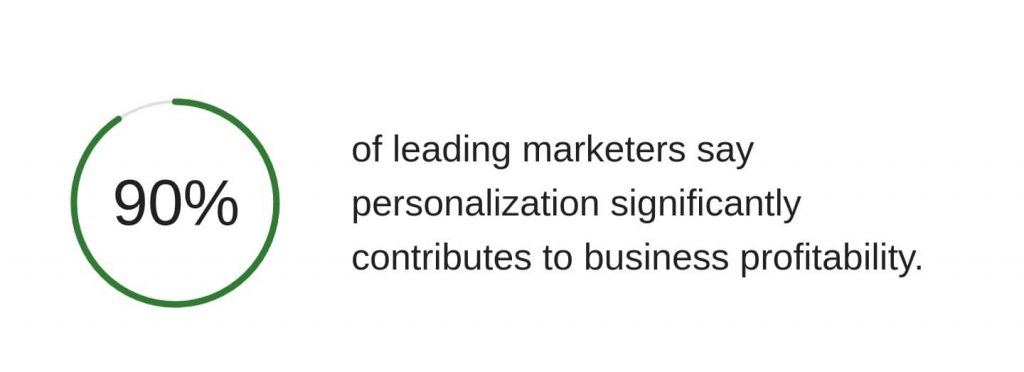
Customer-centric marketing extends across marketing channels. These personalization marketing statistics highlight how focusing on customized shopping experiences can drive loyalty and revenue.
A majority (74%) of eCommerce companies have implemented website personalization programs.
Instead of offering the same website experience to each user, 74% of eCommerce retailers have chosen to introduce customization. These programs allow shoppers to see different products, ads, and other visual cues that entice them to purchase.
Personalized emails are six times more effective.
Retailers who want to attract more business through email in 2024 can segment their audiences and develop unique offers. Segmenting allows a retailer to craft headlines that speak to the target market along with personalized offers based on trends and past history with the brand.
More than half (57%) of B2B retailers use behavioral data to personalize marketing emails, merchandising, and other messaging.
One of the B2B personalization statistics of note is that companies marketing to other businesses are also collecting data and using it for personalization. Although it wouldn’t seem like this strategy would be successful for marketing to businesses, it is key for improving search engine optimization and drawing in new business.

Customer loyalty personalization statistics
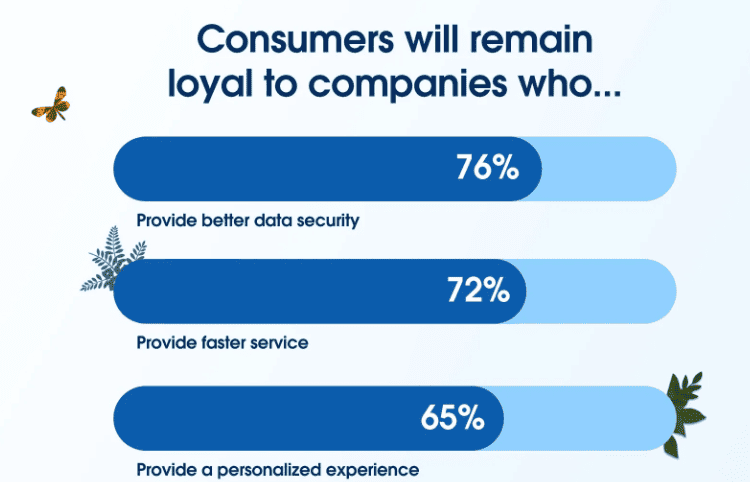
Personalization is a key factor in customer loyalty. As more companies are upping their personalization game, customers have come to expect it, making it more important than ever.
More than half of customers (62%) surveyed in 2022 stated that brands not offering personalization would lose their loyalty, up from 45% a year prior.
Shoppers are increasingly demanding personalization from their preferred retailers. This might include specialized education sessions that help customers choose the right products online from a unique style guide based on browsing history. Retailers should study the best brands in personalization to compete effectively in 2024.
A majority of customers expect brands to understand them.
Customers want brands to treat them like people instead of numbers. Retailers wanting to attract these customers in 2024 should adapt interactions to each shopper’s unique needs. Part of this involves a seamless customer service experience in which customers don’t have to repeat their problems when transferred across departments.
More than two-thirds of customers are willing to recommend a business offering personalization.
Loyal customers are often a retailer’s best advocates. By using personalization to build loyalty, retailers can inspire their most loyal customers to recommend them. Customers who find a retailer through a friend or other recommendation are more likely to be loyal to the brand.
Personalization ROI and conversion statistics
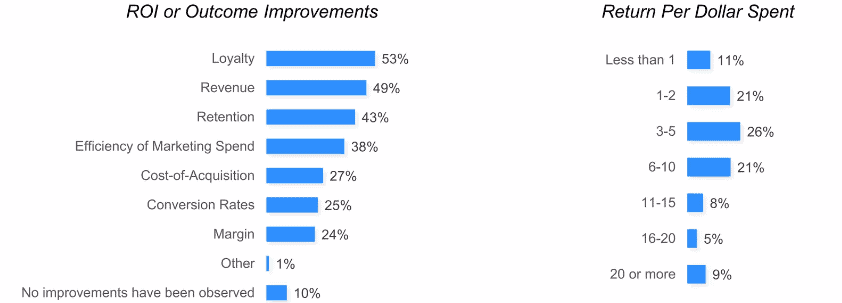
For a retailer, investing in personalization can significantly boost revenues, as shown by these statistics.
On average, companies that are better at personalization see 40% more revenue from their marketing campaigns.
Retailers who want to stay competitive and boost their growth should prioritize personalized marketing and customer service techniques. Focusing on this strategy can help them become more competitive and grow faster than if they keep operating without personalization.
Companies using A.I. to personalize their emails saw a seven dollar increase in average order value.
Retailers can use generative A.I. to brainstorm effective email subject lines and messages that are made specifically for each customer. By sending emails that are relevant to their target audience, retailers can grow their revenues.
By personalizing home page promotions, retailers can capture 85% of customers who rate these ads as influential.
A high percentage of customers in 2024 like seeing ads geared to their interests. When retailers focus on technology that delivers this experience, they can appeal to these customers. As more countries and other municipalities start cracking down on data privacy, retailers can use A.I. and other technology to achieve personalization without compromising data.
Personalization consumer statistics

These personalization consumer statistics show how consumers expect companies to offer unique experiences.
Nearly half of customers are willing to share first-party data through surveys and customer service interviews.
Data privacy may not seem like a retail personalization stat, but it’s important. As retailers balance personalization with data privacy, they need to be innovative in collecting customer data. Luckily, many customers are comfortable sharing information on their buying habits and preferences with a company when asked.
More than 90% of online customers shop anonymously.
Customer data is a necessity for creating an engaging and unique experience. However, with 90% of online shoppers choosing to remain anonymous, personalization can be tricky. Retailers can still use tools such as purchase prediction software and other analytical tools to target these customers with personalized recommendations.
About 40% of consumers do not expect companies to use their data ethically.
Individualized shopping experiences require a delicate balance between data analysis and data privacy. In 2024, retailers have a variety of tools to help segment and analyze customer data without relying on personal information. They can also leverage privacy policies and increased transparency to create customer confidence and excel at personalization.
Case studies: Successful retail personalization strategies
Learn from these retail personalization stats examples from companies nailing their strategies.
Nike successfully leveraged personalization to generate $10 billion.
In the late 2010s, Nike took personalization to another level with its direct-to-consumer model, Nike Direct. This initiative involved analyzing data from the Nike app to personalize recommendations to users and increase engagement. An impressive retail personalization stat, in 2018, this program saw sales of $10 billion.
The Gap used personalization on 80% of its product presentations to attract new customers.
By revamping its marketing strategy and focusing on personalization, the Gap was able to boost online sales by 60% and sign up 3.5 million new loyalty members in two months.
Retail personalization statistics: How to get the maximum out of them
These retailer personalization stats are eye-opening, but how does a retailer turn translate them into success? Follow these tips.
- Focus on emerging technology such as AI to personalize messages and tackle marketing automation.
- Use website personalization statistics to better understand how dynamic websites improve user experience and boost sales.
- Make a commitment to data privacy and transparency to gain consumer trust.
- Take advantage of AI-based data analytics platforms for insightful customer behavior analysis that informs targeted messaging.
- Survey existing customers to see what they want in their loyalty program and use the recommendations to revamp existing programs.
Discover more insightful resources for industry statistics
Click on these resources to peruse more helpful industry insights.
Discover more must-read resources for personalization
Learn more about personalization here.
- https://blog.contactpigeon.com/email-personalization/
- https://blog.contactpigeon.com/first-party-data/
Turning retail personalization statistics into data-driven decisions
If these retail personalization stats prove anything, it’s that retailers need to make it a key focus in 2024. Companies that aren’t using personalization should analyze their customer base and collect data to determine how they can create unique shopping experiences.
They can use these statistics to develop a personalization strategy that improves the customer experience and boosts loyalty. Companies already using personalization can use these statistics to evaluate their own personalization efforts and identify where to improve. By implementing a customer-centric strategy, retailers can successfully grow in 2024.

Let’s Help You Scale Up




![Benchmarking Growth Strategies of Top Fashion Retailers [Study]](https://blog.contactpigeon.com/wp-content/uploads/2025/11/top-fashion-retailers.jpg)